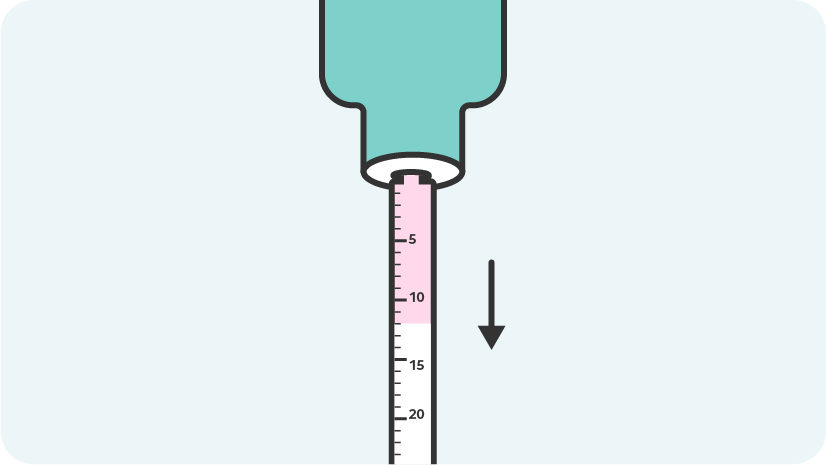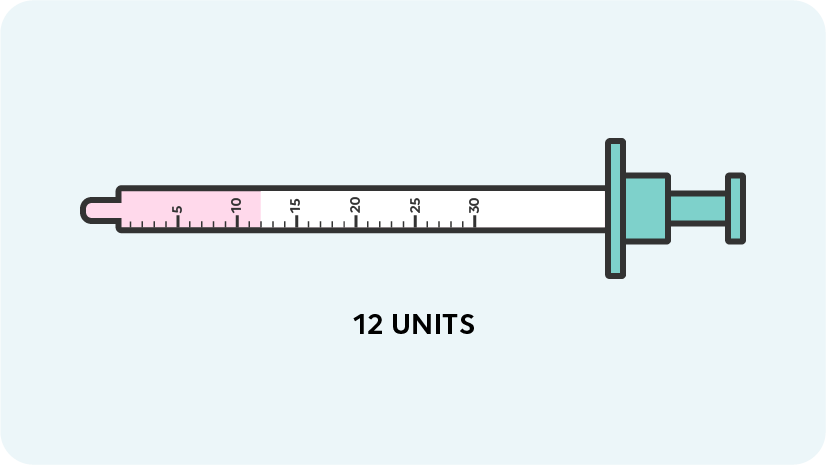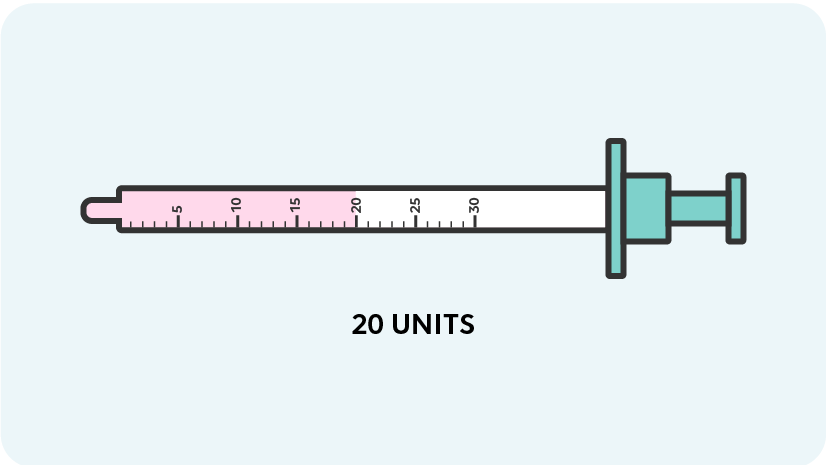Microdosing GLP-1 Product Guide
Microdosing GLP-1 is a low-dose prescription of Oral Semaglutide Drops taken 3 times weekly.
GLP-1 medications like GLP-1 are primarily used to treat type 2 diabetes and weight loss. When taken in small doses, known as microdosing, GLP-1 may have additional health and longevity benefits, potentially enhancing mood, energy, cognitive health, organ health, and cellular health.
Before you get started, read more about important usage information for Microdosing GLP-1.
Quick tips
Here are some simple steps to help you get the most from each dose:
- Try taking your dose 30 minutes before your first meal of the day
- For the best results, take on an empty stomach
- Drink water before taking your dose
- Let the medication sit under your tongue for as long as possible before swallowing
- Do not eat anything for at least 30 minutes after taking your dose
Follow these tips to ensure that Oral Semaglutide Drops for microdosing are properly absorbed, so you can experience the best possible benefits while minimizing side effects.
Getting started
When you first receive your prescription, ensure proper storage guidelines to maintain the quality of the solution.
Follow the instructions for properly drawing and administering your medication.
Always dose according to your doctor-guided titration schedule.
Explore Microdosing GLP-1 benefits so you know what to expect. Learn the best strategies for reducing potential side effects.
Storage
Your Microdosing GLP-1 includes Oral Semaglutide Drops, which is room temperature stable. To maintain the utmost quality, store your bottle(s) between 68°F and 77°F, and away from heat sources and direct sunlight. Keep out of reach of children and pets.
Upon receiving your prescription, check the temperature of the bottle with the back of your hand. If it feels hot to the touch, please contact us immediately.
You may safely travel with your prescription, so long as the above conditions are met. Though Oral Semaglutide Drops are stable at room temperature, you should still take care to store your prescription as you would any other medication.
How to draw your solution
Before you draw the solution, unscrew the lid of the prescription bottle and attach the seal adapter to the top of the bottle. Confirm the adapter is in place before moving on. Be sure to reseal the cap, shake the bottle well, and check that the oral syringe is clean and dry before proceeding.
Next, insert the tip of the syringe into the top of the bottle. When it’s securely in place, flip the vial and syringe over, and hold together tightly at your eye level.
Then, slowly pull the plunger back to draw up your dose. Don’t stop until the black line on the plunger stops at the exact measurement for your dose. If there are bubbles in the oral syringe, you can gently flick the side of the syringe to release the air bubbles.
When you’ve drawn your dose, flip the bottle upright and carefully remove the syringe without touching the plunger.


How to measure units on your syringe
Each large line on your oral syringe represents increments of 0.1ml. Each small line indicates an increment of 0.01ml.
Before getting started, check to see how many milliliters (ml) are in your dose. If your dose calls for 0.2ml, simply pull back on the plunger until the black line stops at the “0.2ml” line. The level of solution in the syringe should also match this amount.
Your Microdosing GLP-1 protocol calls for the lowest measurements on your oral syringe. Pay close attention to the markers between the large lines when drawing up your dose to ensure that you receive the accurate dose that your doctor has prescribed for the week.


How to administer your solution
Oral Semaglutide Drops are delivered sublingually, or underneath the tongue.
To administer your solution, touch the tip of your tongue to the roof of your mouth, then carefully hold the tip of the oral syringe under your tongue at a downward angle. It’s okay to let the tip of the oral syringe touch your tongue.
Slowly press all the way down on the plunger until all the solution is administered, then hold the tip of the syringe under your tongue for an additional 5-10 seconds to catch any excess solution.
Avoid swallowing for as long as possible to ensure the solution is properly absorbed—at least 90 seconds. The solution will usually dissolve and disperse on its own. Do not eat anything or drink anything for at least 30 minutes after taking your dose.
Microdosing GLP-1 titration schedule
You will always start at a low dose and increase your dose over several weeks to gradually introduce the medication to your body and reduce your risk of side effects.
Microdosing requires small, careful measurements that may be difficult to accurately measure. Pay careful attention to your doctor-guided titration schedule to ensure that you are always receiving the accurate dosage.
Unless you are specifically prescribed otherwise, your dosing schedule will proceed as follows:
| Week | Dose | Solution Strength | Frequency |
|---|---|---|---|
| Week 1-4 | 0.1ml | 5mg/ml | Three times weekly |
| Weeks 5-8 | 0.2ml | 5mg/ml | Three times weekly |
| Weeks 9+ | 0.3ml | 5mg/ml | Three times weekly |
You will take your prescribed dose three times per week, so be sure to schedule times that work best for you, like Monday/Wednesday/Friday.
For the first 4 weeks, you will take 0.1ml three times per week as your body adjusts to the medication.
For weeks 5-8, increase your dose to 0.2ml, as tolerated.
For week 9 and beyond, you will increase your dose to 0.3ml, which will remain your dose for the duration of your prescription.
Always follow the titration schedule provided by your AgelessRx prescriber, even if it differs from the standard titration protocol above.
If you forget your titration schedule, you can always check your prescription vial or your AgelessRx portal.
If you miss a dose of Oral Semaglutide Drops, you can skip that dose and take it the next day. Never take more than your prescribed dose. If more than 2 weeks have passed since your last dose, please contact your prescriber for further guidance: you may be asked to restart your titration.
Note: The maximum dose for Microdosing GLP-1 is 0.3ml. Do not exceed a dose of 0.3ml for three times a week, or you may run out of your solution before your next refill, causing a lapse in treatment. If you’d prefer to stay at a lower dose, please contact your prescriber. Patients who would like to switch to a higher dose must switch to a normal GLP-1 prescription. If you feel you are not meeting your health goals on your prescribed dose, contact your prescriber.
Microdosing GLP-1 Benefits
The benefits of Microdosing GLP-1 have not been extensively explored in the scientific literature, and neither this dose nor Oral Semaglutide Drops have been evaluated by the FDA. However, FDA-approved GLP-1 RAs have been shown to have the following benefits:
- Lowered blood sugar levels
- Improved insulin sensitivity
- Decreased appetite & cravings
- 70% reduced risk of Alzheimer’s
- 20% reduction in CVD risk
- 19% reduced risk of all-cause mortality
Recently, there have been several studies underway and experts have reported anecdotal evidence that supports Microdosing GLP-1 for possible longevity benefits. Based on these reports, our medical experts anticipate that Microdosing GLP-1 may also have the following potential benefits:
- Improved mood & energy
- Reduced inflammation
- Boosted immune health
- Reduced symptoms of chronic & autoimmune conditions
Please note that Microdosing GLP-1 is not intended as a weight loss prescription. At micro doses, Oral Semaglutide Drops may be less effective for weight loss than injectable forms of Semaglutide, which means the weight loss benefits of Microdosing GLP-1 may not be as significant. If you feel that you’re not meeting your health goals, please contact your prescriber.
Side effects
Microdosing GLP-1 is a low-dose Oral Semaglutide Drops prescription, which may result in lower risk and severity of potential side effects.
Oral Semaglutide Drops has not been evaluated by the FDA, but side effects are expected to be similar to other Semaglutide-based medications reviewed by the FDA, which have the following side effects: nausea, diarrhea, vomiting, constipation, abdominal (stomach) pain, headache, fatigue, dyspepsia (indigestion), dizziness, abdominal distension, eructation (belching), hypoglycemia (low blood sugar) in patients with type 2 diabetes, flatulence (gas buildup), gastroenteritis (an intestinal infection) and gastroesophageal reflux disease (a type of digestive disorder).
Common side effects normally go away on their own within a few days or up to 2-3 weeks. If you find that any side effects persist for longer than this or get worse over time, stop taking your medication and contact your prescriber as soon as possible.
To help prevent side effects from occurring or persisting, try the following:
- Eat slower and at more regular intervals throughout the day
- Try to take your medication at around the same time each day
- Drink water before taking your dose
- Avoid fried, greasy foods in favor of healthier, low-fat options
Dehydration may also be an indirect side effect for those experiencing vomiting and diarrhea. If you do experience these side effects, make sure that you are drinking plenty of water and fluids with electrolytes to avoid dehydration.
For some patients, taking probiotics may help reduce gastrointestinal side effects, but results may vary. Ginger and peppermint oil may also help to reduce gastrointestinal side effects.
This is only a summary of potential side effects and how to address them. For more information, please reference the Mayo Clinic’s Semaglutide resources, or ask your prescriber.
Serious side effects
GLP-1 medications like Semaglutide have been associated with the following rare but serious side effects.
- Thyroid C-cell tumors
- Diabetic retinopathy
- Hypoglycemia
- Kidney problems
- Gallbladder problems
- Pancreatitis
- Worsening of mood
Your AgelessRx prescriber will weigh these potential risks against your unique medical history when considering a prescription. If you have been approved for a Microdosing GLP-1 prescription, your prescriber has determined that it is unlikely that you are at risk for these serious side effects.For a full list of potential warning signs for these conditions, please see the Mayo Clinic’s Semaglutide resources.
Important safety information
Microdosing GLP-1 should not be used by anyone who has a personal or family history of medullary thyroid carcinoma (MTC), multiple endocrine neoplasia syndrome 2 (MEN2), or pancreatitis.
The FDA is currently evaluating whether GLP-1 medications may increase the risk of suicidal thoughts or actions. Though the FDA has found no evidence supporting this risk, patients with a history of suicidal thoughts should not take Microdosing GLP-1.
Do not use your medication if you are pregnant or breastfeeding, or planning to become pregnant or breastfeed.
Though rare, allergic reactions to Semaglutide are possible. If you notice any shortness of breath or swelling around your face, tongue, or throat after using Oral Semaglutide Drops, stop use immediately and contact emergency services right away.
As with any prescription medicine, the dose prescribed is for you and you alone. Do not, under any circumstances, allow anyone else to use your Oral Semaglutide Drops.
Note: The above statements have not been evaluated by the Food and Drug Administration. This product is not intended to diagnose, treat, cure, or prevent any disease.
FAQs
What is Microdosing GLP-1?
Microdosing GLP-1 is a low-dose therapy using Oral Semaglutide Drops in small, gradual doses to help optimize health and longevity benefits while minimizing side effects.
Microdosing is the medical practice of administering very small doses of a drug, often to provide dose-specific benefits that might be different than the regular dose, while minimizing side effects.
Anecdotal evidence suggests that, by microdosing with GLP-1 medications like Oral Semaglutide Drops, patients could unlock the longevity benefits of GLP-1, like improved moods, reduced inflammation, better immunity, and reduced symptoms of chronic and autoimmune conditions. Clinical trials are underway to try to confirm these benefits.
How is Microdosing GLP-1 different from other GLP-1 treatments?
Unlike higher doses of Semaglutide that are typically prescribed for diabetes or weight loss, Microdosing GLP-1 focuses on broader health and longevity benefits with reduced side effects:
- Lower dose
Microdosing GLP-1 is prescribed at very low doses, starting at about half the usual starting dose up to about ⅕ the weight loss dose. - Precision health benefits
Anecdotal evidence suggests that microdosing could unlock longevity benefits like improved moods, reduced inflammation, better immunity, and reduced symptoms of chronic and autoimmune conditions. Clinical trials are underway to try to confirm these benefits. - Reduced side effects
With lower doses also comes a potentially lower risk of side effects. If you do experience side effects, they’re more likely to be brief and mild. - Needle-free
Microdosing GLP-1 uses Oral Semaglutide Drops, a needle-free alternative that delivers the benefits of GLP-1 with several drops under your tongue.
Does Microdosing GLP-1 work for weight loss?
Microdosing GLP-1 is not intended as a weight loss treatment. Some patients may achieve weight loss, but at low doses, any weight loss benefits are expected to be mild if any at all. But don’t worry! If weight loss is your main goal, we have science-backed weight loss solutions that may be a better fit for you.
Additional resources
-

How to Get GLP-1 Naturally
Increase your body’s natural GLP-1 levels and take control of your health with easy, science-backed tips and lifestyle changes!
-

GLP1s for Weight Loss and Diabetes Explained
Learn how GLP-1s aid in weight loss and diabetes management by regulating blood sugar, reducing appetite, and improving heart health.
-

Which GLP-1 Is Best for Weight Loss?
What is the best GLP-1 for weight loss? Compare Wegovy & Ozempic to find the option that fits your unique health goals.
